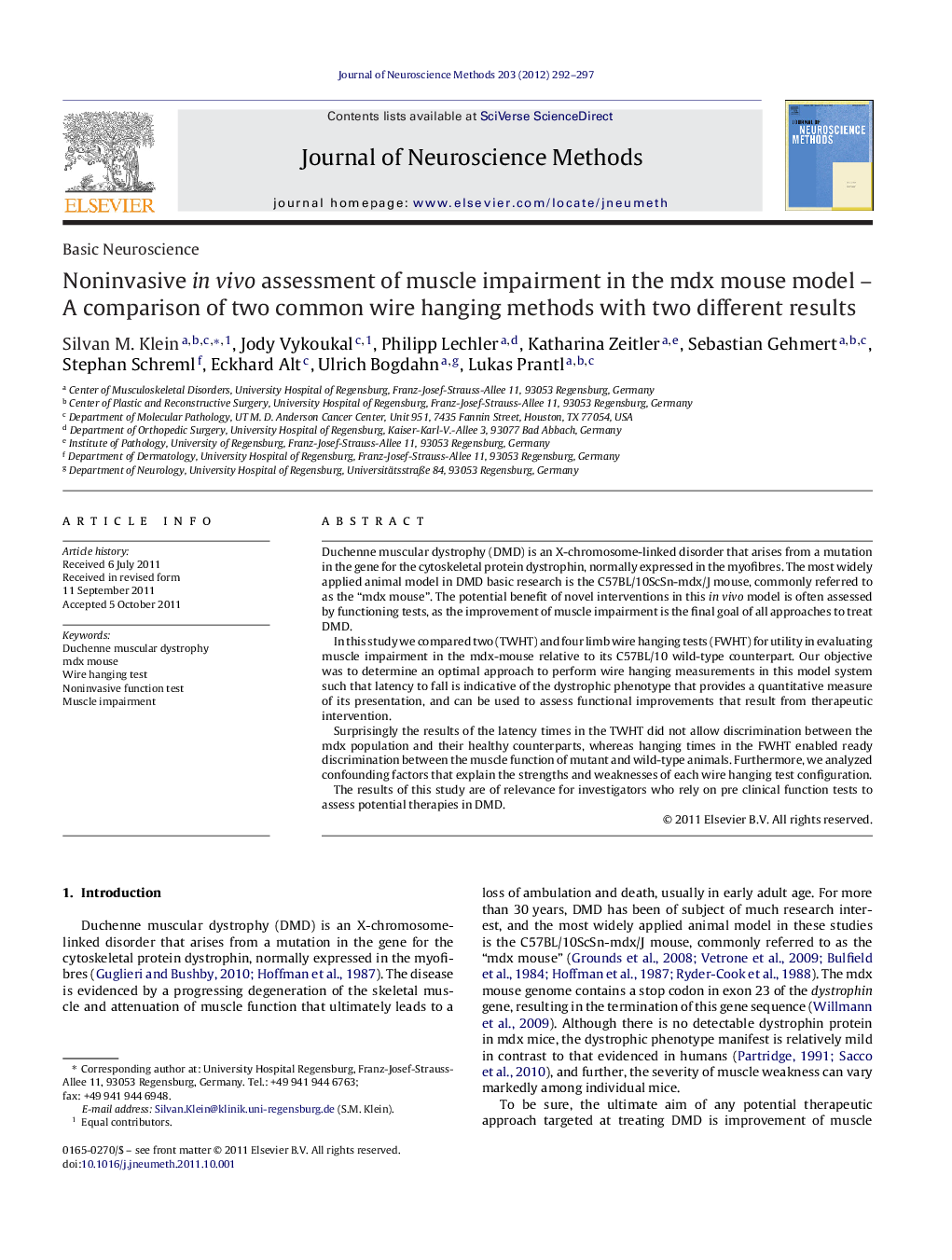| کد مقاله | کد نشریه | سال انتشار | مقاله انگلیسی | نسخه تمام متن |
|---|---|---|---|---|
| 4335303 | 1295145 | 2012 | 6 صفحه PDF | دانلود رایگان |

Duchenne muscular dystrophy (DMD) is an X-chromosome-linked disorder that arises from a mutation in the gene for the cytoskeletal protein dystrophin, normally expressed in the myofibres. The most widely applied animal model in DMD basic research is the C57BL/10ScSn-mdx/J mouse, commonly referred to as the “mdx mouse”. The potential benefit of novel interventions in this in vivo model is often assessed by functioning tests, as the improvement of muscle impairment is the final goal of all approaches to treat DMD.In this study we compared two (TWHT) and four limb wire hanging tests (FWHT) for utility in evaluating muscle impairment in the mdx-mouse relative to its C57BL/10 wild-type counterpart. Our objective was to determine an optimal approach to perform wire hanging measurements in this model system such that latency to fall is indicative of the dystrophic phenotype that provides a quantitative measure of its presentation, and can be used to assess functional improvements that result from therapeutic intervention.Surprisingly the results of the latency times in the TWHT did not allow discrimination between the mdx population and their healthy counterparts, whereas hanging times in the FWHT enabled ready discrimination between the muscle function of mutant and wild-type animals. Furthermore, we analyzed confounding factors that explain the strengths and weaknesses of each wire hanging test configuration.The results of this study are of relevance for investigators who rely on pre clinical function tests to assess potential therapies in DMD.
► We compare two and four limb wire hanging assessments for utility in evaluating muscle impairment in the mdx-mouse model.
► The two limb wire hanging set turns out to be imperfect for evaluating muscle strength.
► Confounding factors that explain this imperfection are identified.
► The wire hanging test is best suited for the assessment of muscle impairment when implemented using a four limb test set-up.
Journal: Journal of Neuroscience Methods - Volume 203, Issue 2, 30 January 2012, Pages 292–297